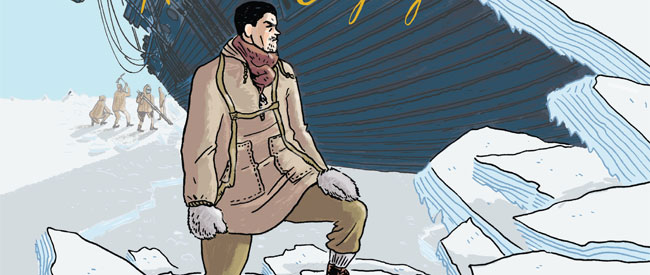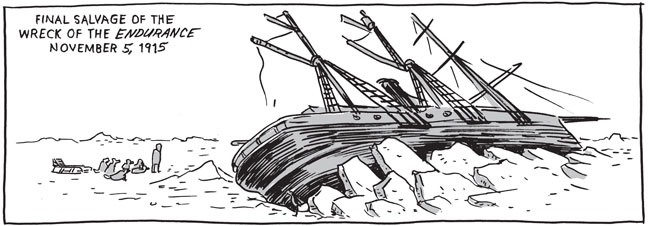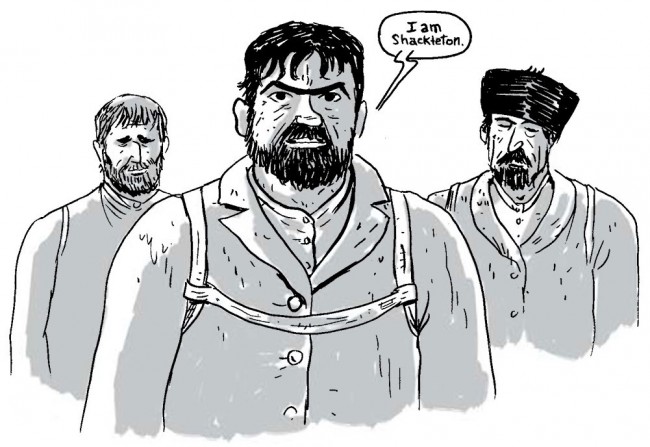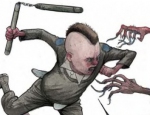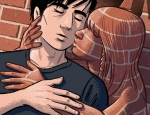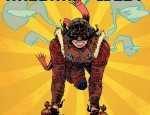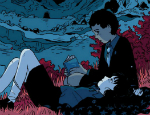In Shackleton: Antarctic Odyssey, Nick Bertozzi’s witty cartooning brings to life one of history’s most incredible tales of human endurance.
It’s easy to see why – even a century on – the Heroic Age of Antarctic Exploration continues to exert such a hold on our imaginations; it’s hard to think of another environment on earth that could provide such a strong test of human character and endurance. As one (slightly more recent) commentator observed, the Antarctic is generally “a place where dudes with beards go to see how dead they can get”.
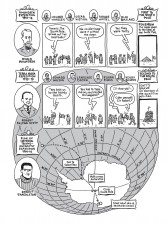 And while it’s probably the tragic demise of Captain Scott and his expedition that’s cemented most firmly in our consciousness, the other expeditions of the era threw up their own incredible feats of adventure – none more so than that led by Sir Ernest Shackleton in 1914-17.
And while it’s probably the tragic demise of Captain Scott and his expedition that’s cemented most firmly in our consciousness, the other expeditions of the era threw up their own incredible feats of adventure – none more so than that led by Sir Ernest Shackleton in 1914-17.
Writer/artist Nick Bertozzi has a bit of previous in the exploration game; his earlier book Lewis and Clark (also published by First Second) chronicled the famous expedition across the North American continent by those two trailblazers. And in Shackleton: Antarctic Odyssey, he brings all of his cartooning chops to bear on a dense but pacey read that mixes the heroic with the human.
The Shackleton who Bertozzi depicts is a man with a magnificent obsession. Having been sent home suffering with scurvy from Scott’s abortive Discovery Expedition (1901-04), and having led his own failed mission to the Pole in 1907-09, he was determined to return south and etch his name in icy history.
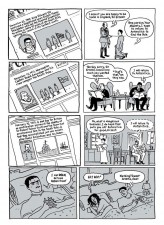 Bertozzi captures the nature of Shackleton’s single-mindedness beautifully through a sequence that tellingly ends with him slamming the door of the Royal Geographical Society in the face of his care-worn wife, who has been trying to deter him from a further expedition.
Bertozzi captures the nature of Shackleton’s single-mindedness beautifully through a sequence that tellingly ends with him slamming the door of the Royal Geographical Society in the face of his care-worn wife, who has been trying to deter him from a further expedition.
As Norwegian Roald Amundsen had reached the Pole in 1912, Shackleton had to come up with something almost equally as eye-catching. His plan: to walk from one side of the Antarctic to the other, stopping off at the Pole along the way. And on August 1st 1914 his grandly titled Imperial Trans-Antarctic Expedition set sail from Plymouth on the aptly named Endurance.
What follows, as depicted with great brio and economy by Bertozzi, is one of the great adventures of exploration, as Shackleton and his men find themselves trapped in the ice and forced to abandon their crushed ship before they even set foot on the Antarctic continent.
It’s probably not too much of a spoiler to reveal that every (human) member of the expedition lived to tell the tale, despite facing some of the most inhospitable conditions on earth. However, the details of the heroism and resolve needed not only to survive but also to escape deserve another airing.
What Bertozzi achieves with his book is to highlight not just the explorers’ physical endurance, but also their mental strength – highlighted by the often absurd antics they cooked up to keep themselves occupied. So apart from giving us a crash course on the difficulties of polar exploration, Bertozzi also shows us icy bike rides, football matches, mock trials and dog sled races.
And while the book – via its creator’s flair for neat characterisation – pays its fair dues to the full complement of the Endurance, it’s not surprising that it’s Shackleton who’s at the heart of it. In contrast to his stiff discomfort with domestic family life, on the sea and ice he comes alive, doing everything he can to make the ordeal tolerable for his men and eventually embarking on the wild gamble required to save them.
Bertozzi’s assured cartooning remains clear but inventive throughout. He makes fine use of the comics form to incorporate maps, plans and graphics into his pages to deliver information without resorting to clumsy authorial exposition. And his witty, elliptical narrative style, hopping briskly between key moments and incidents, keeps the story moving at a thrilling pace that never relents.
However, while that pace keeps the reader gripped, for me it meant that the book lost a bit of focus on one of the aspects of the men’s ordeal that I find most intriguing: what must have been an almost overwhelming sense of isolation and tedium, trapped for months and months, with little hope of recovery, at – almost literally – the very edge of the world.
 In this aspect, maybe the book isn’t best served by its small dimensions, which don’t give Bertozzi the opportunity to evoke the vast emptiness of the environment in which Shackleton and his men found themselves trapped.
In this aspect, maybe the book isn’t best served by its small dimensions, which don’t give Bertozzi the opportunity to evoke the vast emptiness of the environment in which Shackleton and his men found themselves trapped.
I’m normally a fan of First Second’s small-format books, which are very inviting to stick into a bag or coat pocket. However, maybe this is an example of where a bigger page would also allow the artist’s intricate inkwork to breath a bit more easily.
Nevertheless, this is a fine all-ages introduction to one of history’s greatest tales of comradeship and derring-do. The survival of Shackleton and his men is a tale that deserves to be told again and again, and Nick Bertozzi gives his rendition a light touch and no small amount of wit and charm.
Nick Bertozzi (W/A) • First Second Books, $16.99, June 2014





